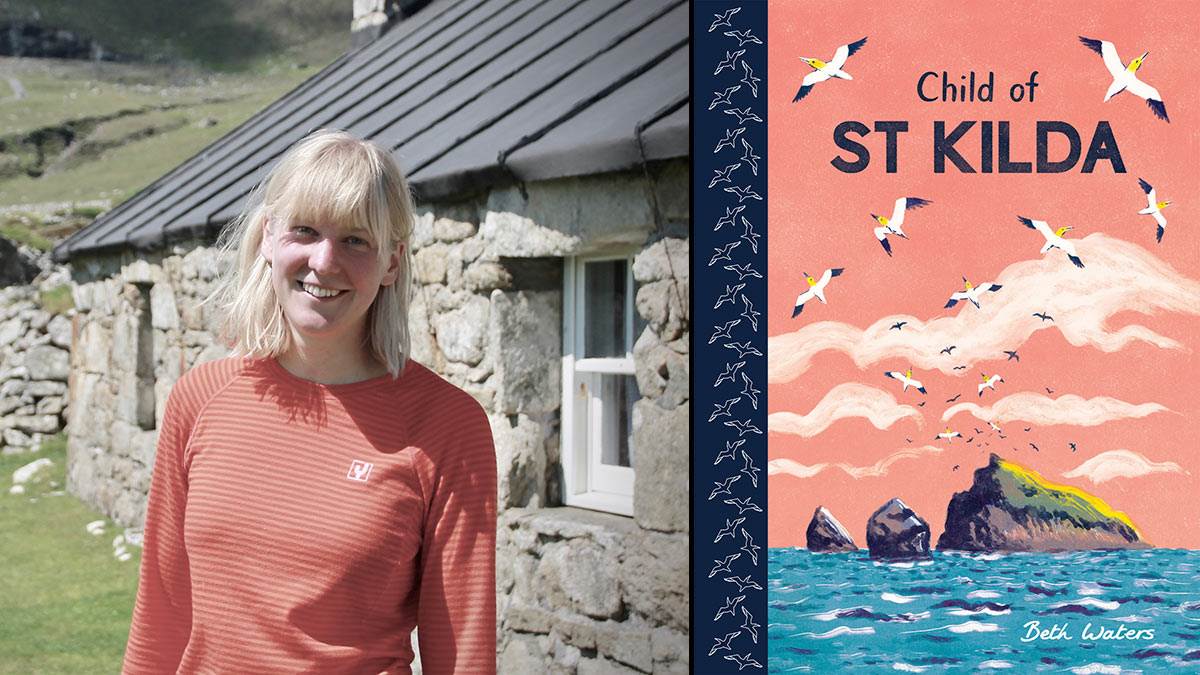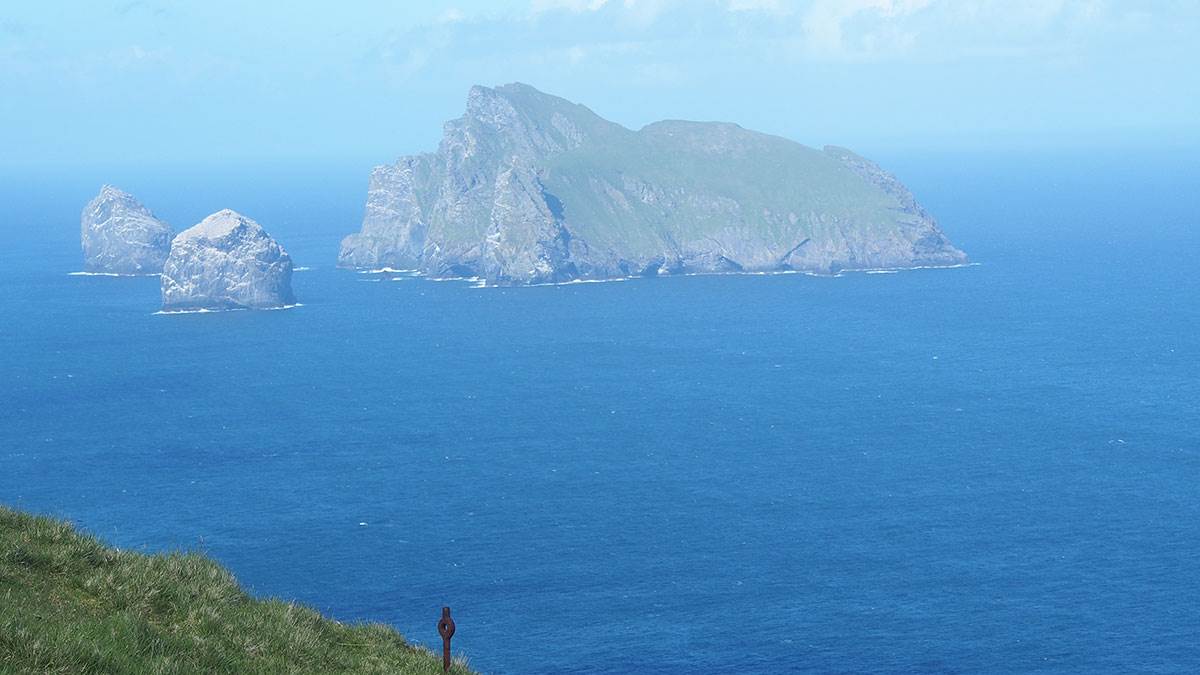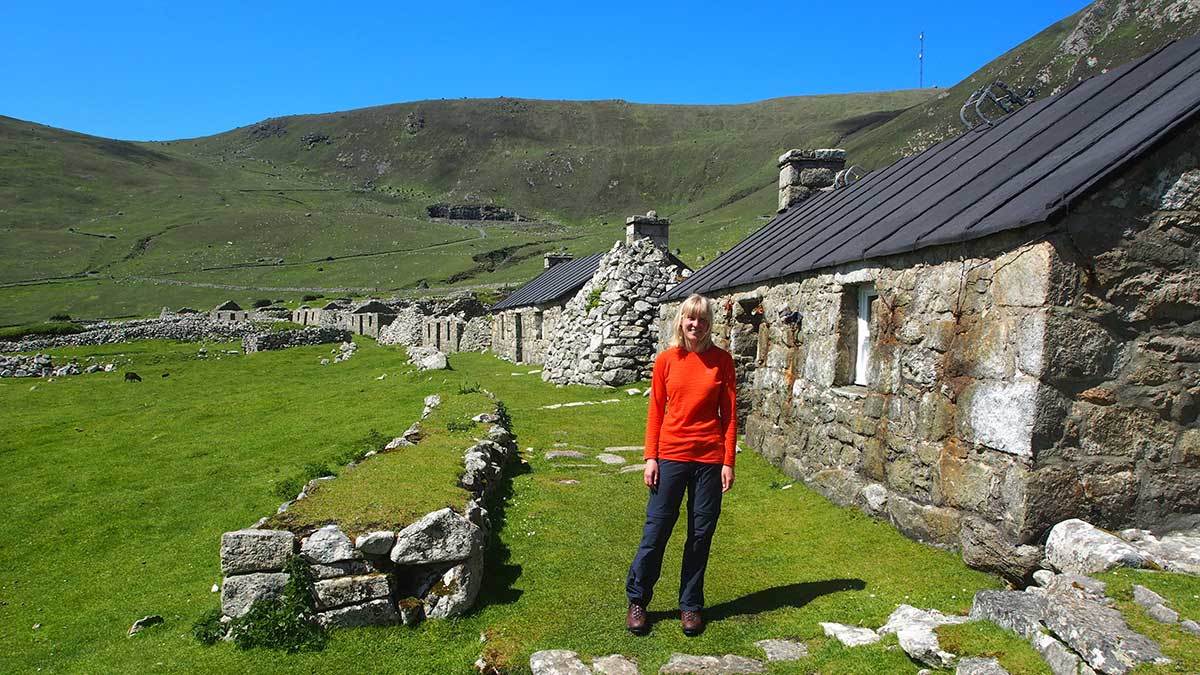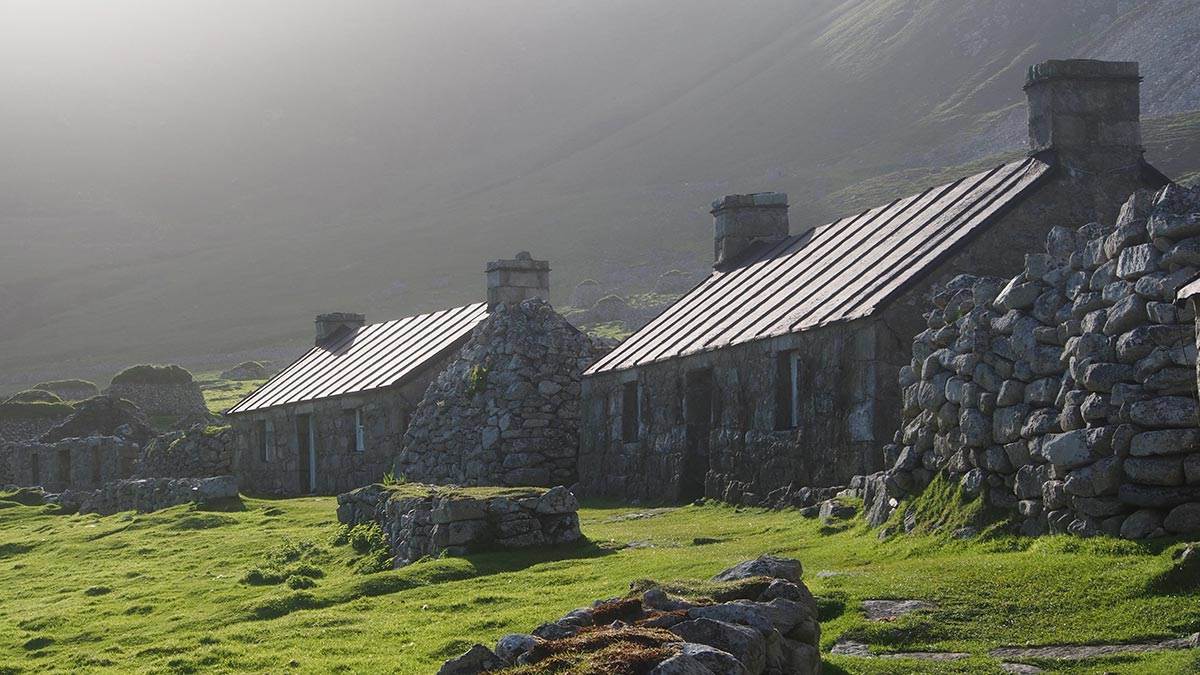'It felt impossibly remote': Beth Waters on exploring the magical world of St Kilda
Published on: 12 February 2019 Author: Beth Waters
Beth Waters tells us all about the journey to write her new book Child of St Kilda - and gives us a peek inside her sketchbook, too.

What is Child of St Kilda about?
St Kilda is a real place, a collection of tiny, steep-sided islands more than 160km away from the west coast of Scotland. It's one of the remotest parts of the UK.
No one lives there permanently now, but amazingly that was not always the case. There were actually people living there, almost completely cut off from the outside world, until the 1930s when the whole community was evacuated to the mainland.
The 'child' of the title is Norman John Gillies, who lived on St Kilda until the evacuation, when he was 5 years old; his family had an important part to play in the story of the Islands.
The book covers the amazing geography and wildlife of the Islands, the unique way of life the people had, why the evacuation happened, and Norman John Gillies's own story. I worked a lot with Norman John's son John, and his daughters Bridget and Shirley, to bring the story together.
How did you come to write a book about St Kilda?
I did my undergraduate degree at the University of Edinburgh, and while I was there I fell in love with Scottish Highlands: the amazing landscapes, the unpredictable weather, and the remoteness.
We took a ferry to the Outer Hebrides, and on one particularly clear day we could actually see St Kilda, miles out at sea, from the top of a hill. I couldn't believe that people had ever lived there, and it captured my imagination. Later, while I was doing my MA in Children's Book Illustration at Cambridge School of Art, I started making artwork inspired by the beautiful old photographs of people on St Kilda, and the book grew from there.

Have you been to St Kilda?
Yes, I was really lucky to be able to go for research - it was an amazing experience! Getting there is difficult and expensive; you book onto a tour boat from Skye or the Western Isles, but the weather is so unpredictable there's no guarantee you'll get to go.
We were lucky; we had a very rough ride but we made it! It was so magical to see St Kilda finally coming into view over the crest of the waves... it felt impossibly remote.
We also got permission to camp there for three days - most visitors just do day trips - so that was fantastic. I was able to spend hours with my sketchbook drawing everything I needed for the book. Location drawings have an immediacy that photos lack, and are invaluable to me in the process of making artwork. And the National Trust rangers and volunteers who were there were founts of knowledge about St Kilda.
What struck me most was just the scale of the place: it's tiny, so tiny that it's difficult to comprehend that people spent their whole lives there, but at the same time the cliffs are absolutely huge and a lot of the land is dizzyingly steep.
There were 'cleits', the St Kildan storehouses, clinging to the most ridiculous, unlikely precipices. They really did live their lives on the edge.
You also got a sense of just how harsh the weather must have been, totally exposed to the Atlantic. We were very lucky and had a lot of sunshine, though I did wake up one morning to find that it had rained overnight, our tent had leaked and my precious sketchbook was soaked. Thank goodness for that modern miracle, the 'hand-drier', which is now to be found in the St Kilda toilet block!

Another problem was the St Kilda field mice - they weren't shy at all and did their best to get into our food stores.
The boat ride back was another rough one, but we got to see the towering sea stacks and the huge gannet colonies. It was like something out of Jurassic Park, a truly prehistoric landscape, and the birds were incredible: their noise and smell was everywhere.
Why does no one live on St Kilda anymore?
On the whole the people were happy on St Kilda, and had a good standard of living compared with other parts of the Highlands at the time, but they were just so isolated, especially in winter. Often they wouldn't see a ship for months.
Life was hard, so I wanted to be careful in the book not to romanticise St Kilda, because that's not realistic. The book explains some of the problems that eventually resulted in the St Kildans asking to be evacuated in 1930.
Nowadays St Kilda belongs to the National Trust for Scotland, who have rangers and volunteers there for part of the year to look after it. There is also a military radar base, but no one lives there permanently.

How do you make your artwork?
All of my artwork is made using a printmaking process called 'monoprint'. It's a bit like relief printing, where you carve a block to make an image, except there's no carving involved - just rolling ink onto a plate and then using a rag to shape it how you want. You only ever get one copy, hence the name. Colours can be built up in layers, and details painted on top. Photoshop helped to get everything looking right, but I'm not very good at it, so most of what you see is handmade.
What age group is the book for?
The book has a fairly complex story with some very sad parts and lots of information in it, but it's written (I hope) in a fairly accessible way, and everything is explained quite simply. There's more information in the glossary for those who are interested, so my hope would be that it's suitable for anyone with an interest in nature, amazing people and remote places, from the age of about 4 to 99!
Take a look inside Beth's sketchbook











Beth Waters shares pages of her Child of St Kilda sketchbook
Image 1 of 11
Beth Waters shares pages of her Child of St Kilda sketchbook
Image 2 of 11
Beth Waters shares pages of her Child of St Kilda sketchbook
Image 3 of 11
Beth Waters shares pages of her Child of St Kilda sketchbook
Image 4 of 11
Beth Waters shares pages of her Child of St Kilda sketchbook
Image 5 of 11
Beth Waters shares pages of her Child of St Kilda sketchbook
Image 6 of 11
Beth Waters shares pages of her Child of St Kilda sketchbook
Image 7 of 11
Beth Waters shares pages of her Child of St Kilda sketchbook
Image 8 of 11
Beth Waters shares pages of her Child of St Kilda sketchbook
Image 9 of 11
Beth Waters shares pages of her Child of St Kilda sketchbook
Image 10 of 11
Beth Waters shares pages of her Child of St Kilda sketchbook
Image 11 of 11
Topics: Features





Add a comment